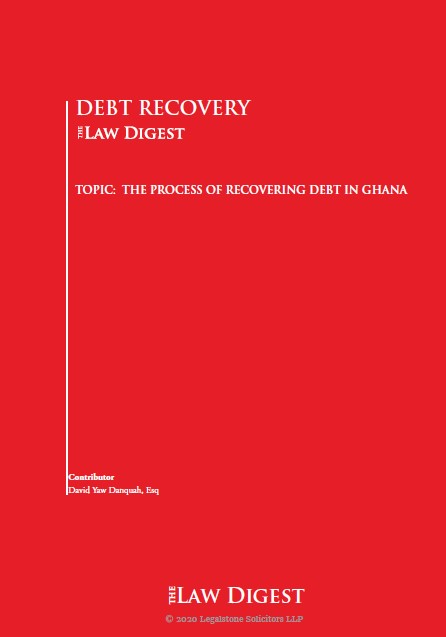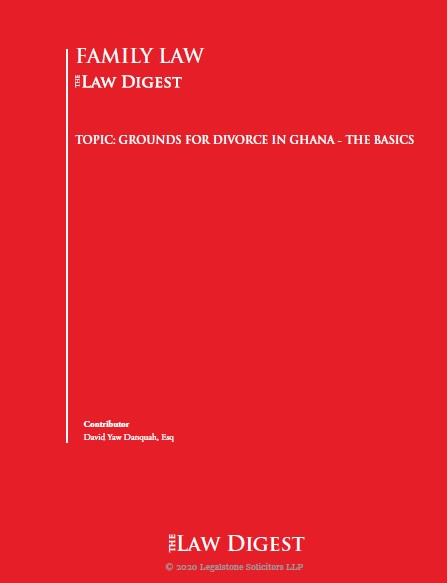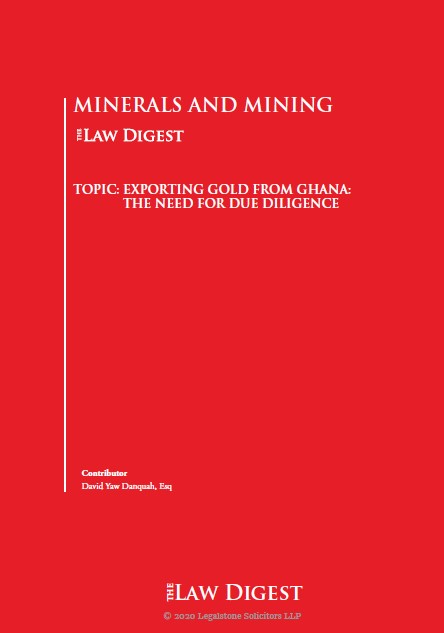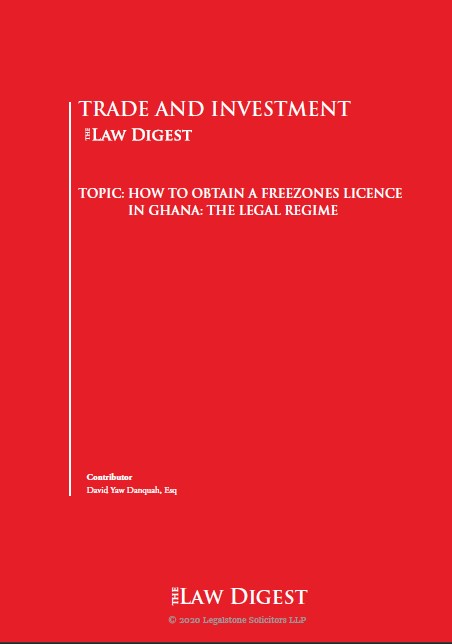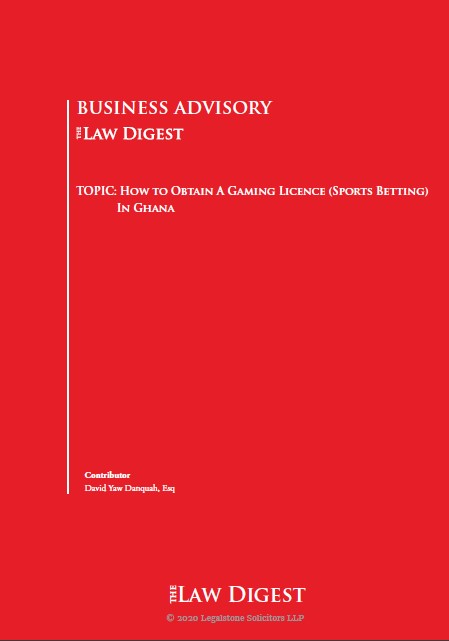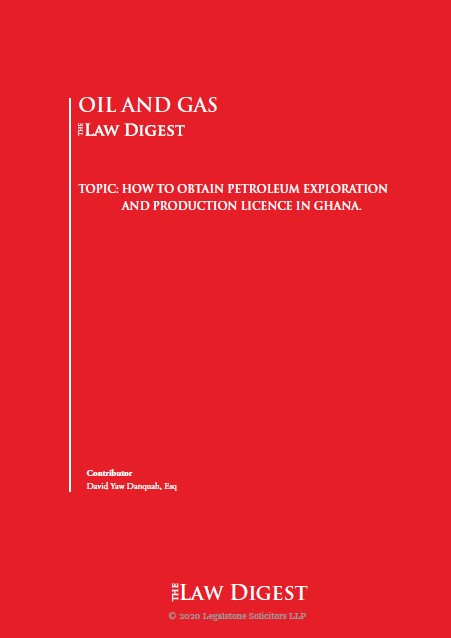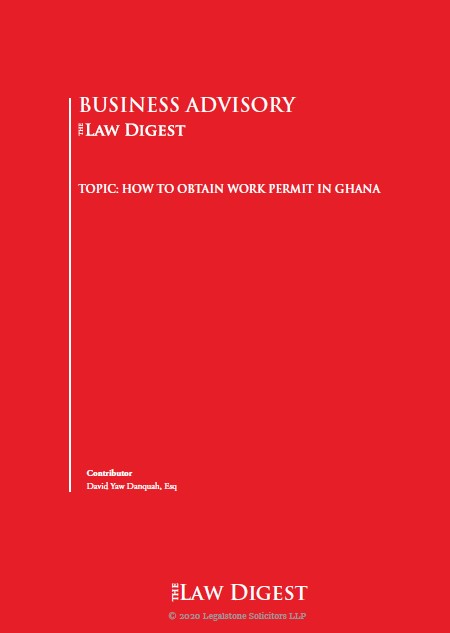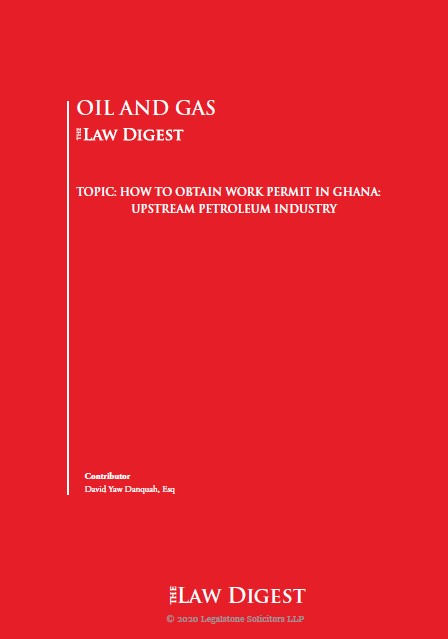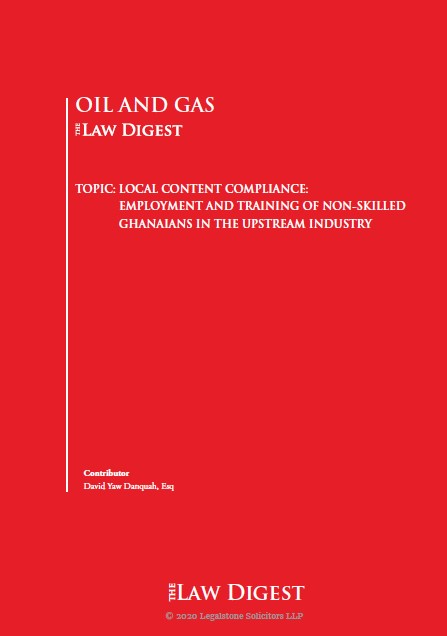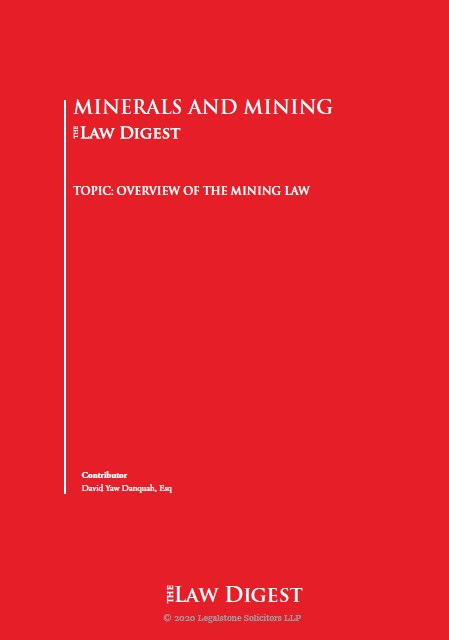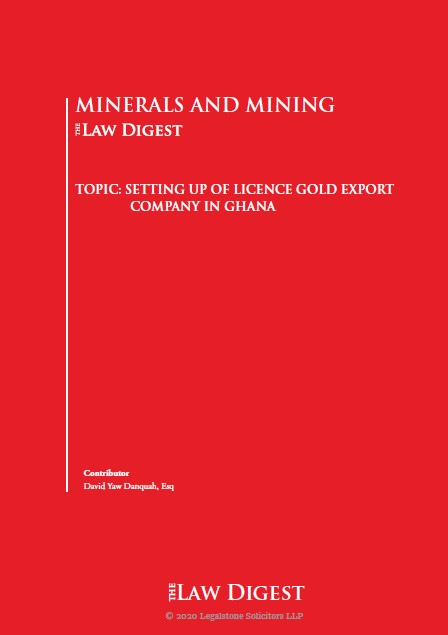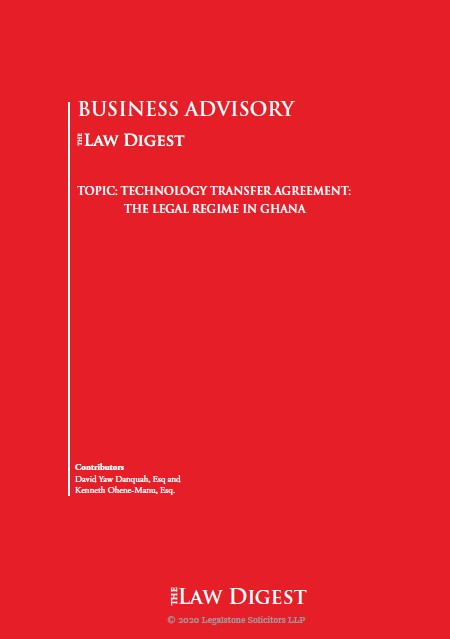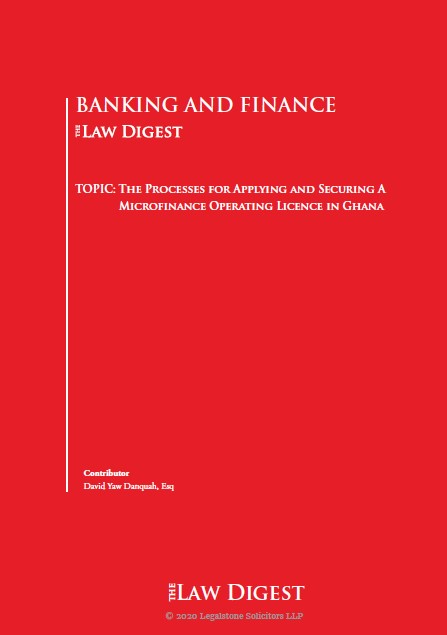
Introduction
English laws on some specific subject matters were applicable in Ghana because of colonization. Thus, the England Matrimonial Causes Act, 1857 was applicable in Ghana until the promulgation of Ghana’s Matrimonial Causes Act, 1971 (Act 367).
Under the English law, the Matrimonial Causes Act of 1857 differentiated between separation and divorce as divorce a mensa et thoro, and divorce a vinculo matrimonii respectively, which were established by the Ecclesiastical Courts.
Divorce a mensa et thoro means that, though the couple are separated, they are still husband and wife in the eyes of the law and therefore, parties subsequently cannot re-marry. So, it is a legal process by which couples seek a court order to separate from each other without dissolving the marriage, unlike divorce a vinculo matrimonii whereby the marriage between the parties is absolutely dissolved and releases the husband and the wife from all matrimonial obligations.
Specifically in Ghana, the promulgation of the laws below governs the contraction and the eventual dissolution of an ordinance marriage.
- Marriages Act, 1884-1985 (CAP 127)
- Matrimonial Causes Act, 1971 (Act 367)
The dissolution of an ordinance marriage in Ghana is governed by the Matrimonial Causes Act, 1971 (Act 367). In the case of such marriage, the law requires that a divorce petition may be presented to the court by either party to the marriage for a dissolution.
The Matrimonial Causes Act provides that a person who petitions the court for dissolution of marriage must provide evidence to the effect that the marriage has broken down beyond reconciliation. This is the sole ground for divorce.
The petitioner, in proving that the marriage has broken down beyond reconciliation, must establish at least one of the following:
- Adultery by the other party
- Unreasonable behaviour
- Desertion for a continuous period of at least two years
- Separation for at least two years
- Separation for at least 5 years
- Irreconcilable differences
-
ADULTERY – Section 2(1) (a) of Act 367
“… the Respondent has committed adultery and that by reason of the adultery the petitioner finds it intolerable to live with the Respondent”.
Section 43 of the Matrimonial Causes Act, 1971 (Act 367) defines adultery as voluntary sexual intercourse of a married person with one of the opposite sex other than his or her spouse. Under Section 2(1)(a) of the Matrimonial Causes Act,1971, the petitioner, for the purposes of showing that the marriage has broken down beyond reconciliation, must prove that, the respondent has committed adultery and by reason of the adultery the petitioner finds it intolerable to live with the respondent.
For the act of adultery to be proved, there must be at least partial penetration. The attempt to commit adultery must not be confused with the act itself and if there is no penetration, some lesser act of sexual gratification does not equate to adultery.
Section 3 of the Act 367 states that, where with a view to reconciliation, the parties to the marriage have lived with each other as husband and wife for a period or periods after it became known to the petitioner that the respondent had, since the celebration of the marriage, committed adultery, then:
- If the length of that period or of those periods together was six months or less, their living with each other as husband and wife during that period or those periods shall be disregarded in determining whether for the purposes of section 2 (1) (a) the petitioner finds it intolerable to live with the respondent; but
- If the length of that period or of those periods together exceeded six months, the petitioner shall not be entitled to rely on that adultery for the purposes of section 2 (1) (a).
Again, if a husband or a wife is proved to have contracted venereal disease (not from his or her spouse) during the marriage, that is sufficient proof of adultery, but the court must not be left in doubt as to whether the disease was contracted before or after the marriage.
-
UNREASONABLE BEHAVIOUR – Section 2(1) (b) of Act 367
“… the Respondent has behaved in a way that the petitioner cannot reasonably be expected to live with the Respondent”.
Section 4 of Act 367 provides that for the purposes of section 2(1) (b), in determining whether a petitioner cannot reasonably be expected to live with the Respondent, the Court shall disregard any period or periods not exceeding six months in the aggregate during which the parties to the marriage lived with each other as husband and wife after the date of the occurrence of the last incident relied on by the Petitioner and proved to the Court in support of an allegation.
Behaviours may include domestic abuse, reckless spending (funding an alcohol or drug addiction, making extravagant purchases you cannot afford etc.), cruelty, refusal of sexual intercourse, practice of coitus interruptus, nagging, venereal disease etc.
It is cruelty for one spouse to infect the other with a venereal disease. Again, refusal of sexual intercourse or the practice of coitus interruptus or insistence on the use of contraceptives may be cruelty if there is no good reason for that conduct.
The conduct complained of must be severe and higher than the ordinary wear and tear of marriage life.
A classic example of unreasonable behaviour can be cited in the case of Walsham v. Walsham whereby there were periods of sexual refusal on the part of the husband, followed by coitus interruptus. This was a clear indication of cruelty on the part of the husband.
Another form of unreasonable behaviour can be found in the case of Forbes v. Forbes whereby a wife refused to have children and insisted on the use of contraceptives, knowing very well that her action was injuring her husband’s health.
3. DESERTION- Section 2 (1) (c) of Act 367
“… the Respondent has deserted the Petitioner for a continuous period of at least two years immediately preceding the presentation of the petition”.
Desertion according to Halsbury’s Laws of England, 4th edition, vol. 13, pg. 284 is defined as the intentional permanent forsaking and abandonment of one spouse by the other without the that other’s consent and without reasonable cause.
Desertion can be defined again as the separation of one spouse from the other with the intention on the part of the deserting spouse to bring cohabitation permanently to an end without the consent of the other spouse.
The physical act of departure by one spouse does not necessarily make that spouse the deserting party. The Petitioner must satisfy the Court that the Respondent has deserted the marriage and there is no intention to return.
Desertion must be for a continuous period of at least two years immediately preceding the presentation of the Petition to qualify as a ground for divorce. The Matrimonial Causes Act states that,
- For the purposes of section 2(1)(c), in determining whether the period for which the respondent has deserted the petitioner has been continuous, the Court shall disregard any period or periods not exceeding six months in the aggregate during which the parties resumed living as man and wife.
- For the purposes of section 2(1)(c) the Court may treat a period of desertion as having continued at a time when the deserting party was incapable of continuing the necessary intention if the evidence before the Court is such that, had that party not been so incapable, the Court would have inferred that the desertion continued at that time.
4. 2 YEARS SEPARATION WITH CONSENT – Section 2 (1) (d) of Act 367
“… the parties to the marriage have not lived as husband and wife for a continuous period of at least two years immediately preceding the presentation of the petition and the respondent consents to the grant of a decree of divorce, provided that the consent shall not be unreasonably withheld, and where the Court is satisfied that it has been so withheld, the Court may grant a petition for divorce under this paragraph despite the refusal”.
The Court must be satisfied that the consent was given after the other party has been given the information that will enable him or her to understand the consequences of the consent.
5. SEPERATION FOR AT LEAST FIVE YEARS Section 2 (1)(e) of Act 367
“… the parties to the marriage have not lived as husband and wife for a continuous period of at least five years immediately preceding the presentation of the petition”.
A party to the marriage may file for a divorce if they have been separated from their partner for at least 5 years from the date the divorce is filed. A consent of the other partner is not needed before the court may decide to grant the divorce.
6. IRRECONCILIABLE DIFFERENCES
A party may file for a divorce if they can show that they have after diligent effort been unable to reconcile their differences with the other party. The petitioner must detail the alleged differences and the various unsuccessful attempts made to reconcile them. Some irreconcilable differences can be on familial finances, parenting, religion, extended family relationships, communication etc.
Other grounds for divorce cited in Section 15 of the Matrimonial Causes Act, 1971 (Act 367) is presumption of death and dissolution of marriage. It is stipulated in the Act that,
1) A married person may present a petition to the Court to have it presumed that the other party to the marriage is dead and to have the marriage dissolved.
2) The Court may, if it is satisfied that reasonable grounds for the application of the presumption exist, make a decree of presumption of death and dissolution of marriage.
3) In proceedings under this section, the fact that for a period of seven years or more the other party to the marriage has been continually absent from the petitioner and the petitioner has no reason to believe that the other party has been living within that time shall be evidence that the other party is dead until the contrary is proved.
Therefore, a person who intends to petition the court for presumption of death and dissolution of marriage may bring the action only when the other party has continuously been absent for at least 7 years and the other party has been continuously absent from the petitioner.
The party must again prove that they have no reason to believe that the other party has been living within that time shall be evidence that the other party is dead until the contrary is proved.
Procedure For Divorce Under the Matrimonial Causes Act, 1971 (Act 367)
Section 1(i) of Act 367 states the ground for the commencement of divorce proceedings. A petition for divorce may be presented to the Court by either party to a marriage. However, for the avoidance of doubt, Court means the High Court, or the Circuit Court as stated in Section 43 of Act 367 subject to the Chief Justice’s power to transfer action under Section 40 of Act 367.
The divorce petition is the document that starts divorce proceedings. This document informs both the Respondent and the Court on the legal basis on which the Petitioner is pursuing a divorce.
The Petitioner files a petition at either the High Court or Circuit Court, and then the Registrar will cause the Petition filed to be served on the Respondent through the Court bailiff. To issue a petition, it must be sent to the Court in triplicate.
There is a Court fee for issuing a divorce petition. It is important to note that a divorce petition cannot be issued within the first year of marriage. However, the Petitioner can rely on events that occurred within the first year of marriage.
Petitions for dissolution of marriage under the Matrimonial Causes Act, 1971 (Act 367) is not open to all persons. Pursuant to Section 31 of Act 367, “The Court shall have jurisdiction in proceedings under this Act where either party to the marriage.
a. is a citizen, or
b. is domiciled in Ghana, or
c. has been ordinarily resident in Ghana for at least three years immediately preceding the commencement of the proceedings.
Restrictions on Divorce Petition
A petition for the dissolution of marriage cannot be presented to the Court by the Petitioner within two years from the date of the marriage. That means that a party to a marriage that is less than two years cannot commence a divorce proceeding, notwithstanding the existence of any of the facts necessitating divorce under the Act. (Section 9 of Act 367).
A person may before the second anniversary of the marriage apply to the court for permission to file a divorce. For the court to grant permission to the party, they must prove at least one of the following:
- that they would suffer substantial hardship if they were not allowed to file a divorce before the period of two years before their marriage.
- depravity on the part of the other party.
If the court is satisfied that either of the above grounds exist, they may allow the interested party to go ahead and file a divorce even though the two years limitation may not have expired. The interests of the children in the marriage may be considered by the court.
An example of a substantial hardship is spousal violence, which constitutes grounds for bypassing the two-year mandatory minimum for seeking divorce.
Conclusion
The Matrimonial Causes Act, 1971 (Act 367) has made the proof of the breakdown of marriage in Ghana the sole ground for divorce. Thus, the onus lies with the courts to find out whether the marriage has indeed broken down beyond all repairs. Once the dissolution of the marriage is established, the court may still reserve the powers to determine whether one party is entitled to maintenance (Section 19), or who may retain full custody of a child (Section 22), or who may be compelled by the court to pay money to retain full possession of matrimonial property (Section 20).
Notes on the contributor.
Mr David Yaw Danquah is the founder and Managing Partner of Legalstone Solicitors, a boutique law firm in Ghana with a concentration on Corporate and Commercial, Mining and Infrastructure, Debt Recovery and Restructuring, Real Estate and Construction Law, and Commercial Arbitration.
He heads the firm’s practice areas focusing on Corporate and Commercial, Mining and Infrastructure, Debt Recovery and Restructuring, and Commercial Arbitration.
David has advised on numerous investment and mining-related transactions. He also has assisted countless international entities in establishing their operations in Ghana and, through his firms, offers support services to those entities. He has an impeccable record of providing technical savvy and exceptional client services.
David is a graduate of Kwame Nkrumah University of Science and Technology (KNUST), Kumasi, where he received his bachelor’s degree in law (LL. B) and the Ghana School of Law, where he studied and received a Post Graduate Qualifying Certificate in Law (PQCL). Furthermore, he holds a Certificate in Negotiation Mastery from Harvard University. In addition, David has an LL.M. with a Merit Degree in International Dispute Resolution from the prestigious Queen Mary University of London, United Kingdom.
David is a member of the Ghana Bar Association, Association of International Petroleum Negotiators (AIPN) and Institute of Energy Law (IEL) based in Houston, U.S.
Legal Notice
The contents of this publication, current at the date of publication set out above, are for reference purposes only. They do not constitute legal advice and should not be relied upon as such. Specific legal advice about your circumstances should always be sought separately before acting based on this publication.
© Legalstone Solicitors

